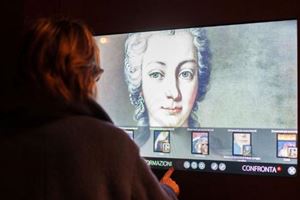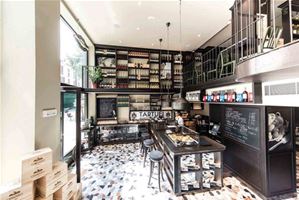When a group
of young, independent artists held its first exhibit in mid-nineteenth-century Paris, no one was expecting it would give rise to one
of the greatest artistic movements of the modern era.
Drawing
inspiration from the theories of Goethe and Helmholz, this heterogeneous group
of revolutionary painters had one shared purpose: to capture ‘impressions’, the
fleeting perception of life as it happened, and reproduce them in a fresh and
spontaneous manner on canvas.
This
concept, combined with innovations in painting techniques and new theories of
colour and light, was the basis of the radical, new style of painting that
Monet, Manet, Renoir, Signac, Sisley and many more introduced.
Seeing
themselves as creating a unique, new visual experience, by the end of the 1800s
these artists began to consider themselves pioneers, explorers and innovators.
Light played a key role in their effort to reproduce both nature and the
feelings that nature induced, and they painted en plein air, discarding
any rules or received methods they thought would impede the creative process.
For example, they used dabs or strokes of unmixed primary colours to simulate
reflected light.
Almost a
century and a half later, Impressionist art is so well known, appearing around
the globe on everything from postcards, posters, T-shirts to advertisements and
the mass media, that countless people have ‘seen’ a Monet or Manet. With
exhibits of Impressionist art frequent the world over, many have seen the works
first-hand. So why might anyone be interested in yet another show featuring the
Impressionists?
If not for
its deeply interactive nature, then for its rarity, the exhibition currently
running at Florence’s Palazzo Strozzi, Painting Light: The Hidden
Techniques of the Impressionists, is a treat for those well-versed in Impressionism
and those new to the style-or even to art. The show, which gathers one of Germany’s largest collections of Impressionist paintings
from the Corboud Foundation in Cologne, presents over 60 rarely viewed Impressionist
and post-Impressionist works. Other masterworks hail from German, French and
Swiss museums, private collections and the Tate in London.
The
exhibit’s main objective is to re-examine the revolutionary nature the
Impressionists’ techniques and demonstrate just how the Impressionists broke
with the traditions of mid-nineteenth-century salon painters. In addition, the
show takes a novel and fascinating look into the secrets behind Impressionist
art and its artists, particularly how rigorous scientific study of the
paintings has revealed much between the surface of an Impressionist painting
and its canvas.
The
paintings are offered as containers of secrets to be discovered. Displaying
state-of-the art twenty-first-century technology used in the study of the
paintings, such as stereomicroscopy, scientific materials analysis and X-ray,
ultra violet and infra-red imaging, along with a model of a nineteenth-century
art supply shop with such details as brushes, canvases, palettes, paints, and a
wooden paint box, is an ingenious way to engage visitors. To encourage them to
become modern-day art sleuths, a series of questions in each of the exhibit’s
many sections invites visitors to take a rare opportunity to meticulously
examine many of the clues that have helped experts shed light on the execution of
Impressionist art.
Visitors are
invited to pinpoint where a painting was originally made, indoors or en
plein air; learn how to tell whether a work is truly finished by analysing
the frame and very fabric of the painting; discover whether paintings were
executed in a truly spontaneous manner by analysing layers of colour and pencil
under-drawings with an infra-red reflectogram; touch copies of the tools,
canvases and paint the artists worked with; learn about a real-life art mystery
by viewing a painting that was once attributed to Monet, recently declared a
forgery.
Moreover,
sleuthing is not reserved only for adults: the final section recreates a crime
scene, and parents and children are invited to solve the mystery. The
interactive ‘whodunit’, Impressionist Murder Mystery, allows visitors of all
ages to employ what they have learned in the exhibit (the alert will notice
clues planted throughout the exhibit) and flex their detective skills to crack
the case of an imaginary Impressionist painter found dead in the Bois de Boulogne.
Visitors may
submit their solutions to the mystery, and the winners will be announced during
the last week of the show. An expert jury of writers, restorers, and art
historians will award prizes to the top three entries, including, as first
prize, a trip for three to Monet’s house at Giverny.
A sliding
scale of entrance fees encourages a wide range of visitors, and the exhibit
includes an important ‘first’: for the first time ever at Palazzo Strozzi a
free audio guide, available in English and Italian, was created specifically
for visually impaired visitors..
PAINTING
LIGHT: THE HIDDEN TECHNIQUES OF THE IMPRESSIONISTS
Palazzo Strozzi, Florence
Until September 28
Friday-Wednesday 9am to 8pm; Thursday 9am to 11pm
Tel. 055/2645155







